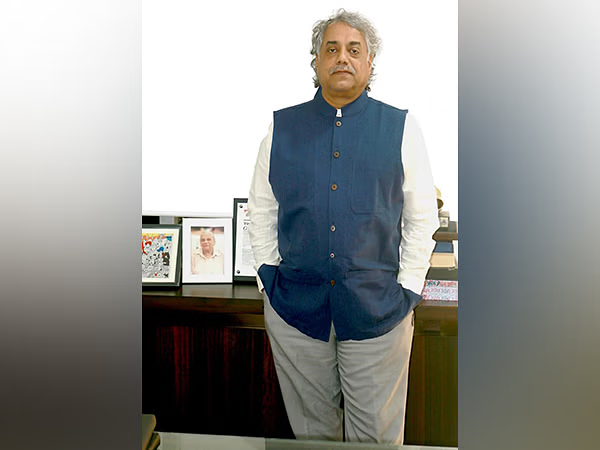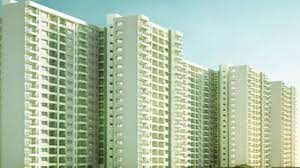News
Ready-to-move – Vanguard of Revival




Anuj Puri, Chairman – ANAROCK Property Consultants
In an important trend in Indian real estate over the last 3-4 years, ready-to-move-in homes are in and under-construction homes are … well, not so in.
When Indian homebuyers make what is usually the costliest lifetime investment, WYSIWYG (what you see is what you get) is an important consideration. Also, under-construction properties have been getting a lot of bad press. While not every developer lacks execution capabilities, the ones that do have burdened the market with heavily delayed or altogether stuck projects.
Unfortunately, this has caused unfinished projects as an entire market segment to get tarred with the ‘unreliable’ brush. Unlike in earlier years when under-construction homes were favoured for their more attractive price tags, homebuyers have become extremely risk-averse.
Also, ready-to-move homes do not attract GST. Charged at 5% of the overall property cost without ITC benefit on under-construction homes, this added cost of acquisitions has no redeeming features for India’s cost-sensitive middle class.
ANAROCK’s Consumer Sentiment Survey for H1 2019 revealed that as much as 36% of the polled prospective buyers prefer ready-to-move-in properties. Another 24% would only consider homes which they can move into in 6 months or less.
It gets even more interesting when we consider the survey’s city-wise data for RTM preference:
- In NCR, at least 56% of prospective buyers preferred ready-to-move properties (this region ‘enjoys’ understandably low levels of customer confidence because of its massive burden of unfinished projects)
- In Bangalore and Hyderabad, at least 44% property seekers in these cities prefer ready homes, followed by
- MMR with 34%
- Chennai with 33%
- Pune with 28% (interestingly, 38% property seekers in Pune will buy homes that will be ready within a year – the highest in this waiting time bandwidth among the top 7 cities), and
- Kolkata with 20%
The attractive price difference that under-construction homes offered over ready-to-move options has reduced significantly . Without lower prices, under-construction homes lose the only real appeal they ever really had. All considered, the rationale behind the preference for ready-to-move-in homes is hard to argue with.
In India, there are hard numbers to justify this preference.
As per ANAROCK data, nearly 5.76 lakh homes launched in or before 2013 – worth a staggering INR 4,64,300 crore – are stuck in different stages of non-completion in the top 7 cities alone. (Five years is a reasonable time-frame to use as a benchmark as this is the longest it should take to complete a normal housing project.). While other countries do not face such a market malaise, the preference for ready-to-move-in apartments is also a global trend visible in major markets such as the US, UK and many parts of Asia.
Due to advantages such as reduced risk, better access to mortgage and reduced complexity of moving in, ready homes are the go-to option for homebuyers in London, New York, Dubai and most other global cities. Cutting to the chase, buyers want finished products, not products under development. They also want affordable homes, and not just in India. Ready affordable housing is trending even in developed markets.
In New York City, a large section of the ready housing supply falls in this category. In Dubai, the demand for ready apartments endures even in an otherwise slow market. The residential market there is currently flooded with ready apartments.
The preference for ready-to-move homes is not restricted to just one budget segment – it is spread across all price categories, including luxury housing. In the past, the demand for under-construction homes was largely driven by investors with an unwavering ‘buy-low-sell-high’ outlook. Projects were getting completed, albeit with some delays, but investors were willing to wait and often bought unfinished inventory in bulk.
Today, Indian housing demand is predominantly driven by end-users – actual buyers who intend to live in the homes they purchase, not sell them or rent them out. This is also true in the case of luxury and ultra-luxury housing. Very recently, a realty major announced that it had sold 376 ready-to-move-in luxury apartments in a project in Gurugram – almost 75% of the overall inventory available in the project – on the very first day of its launch.
Such a feat presupposes the three important strengths – execution capability, holding capacity (not needing to monetize projects immediately) and financial clout (the ability to finance projects to completion without relying on advance sales). Most smaller developers relied on the sale of incomplete or even merely announced projects to raise capital to finish them.
We are witnessing an important facet of the consolidation happening in Indian real estate, wherein established players who can actually complete their projects before marketing have a distinct advantage.
Unsold inventory can and does reduce once it gets completed as long as it is in the right locations, is of acceptable construction quality and offers the right amenities. As per ANAROCK research, the end of Q3 2019 saw 6.56 lakh units lying unsold across the top 7 cities, of which nearly 12% – or about 81,300 units – are ready-to-move-in.
Going by the current trends, it is fairly certain which part of this inventory will ‘move’ first.
-



 News3 weeks ago
News3 weeks agoKW Delhi 6 Mall Onboards New Brands
-



 News3 weeks ago
News3 weeks agoManasum Senior Living Launches IKIGAI GOA, A Senior Living Community in North Goa, in collaboration with Prescon Homes
-



 News2 weeks ago
News2 weeks agoGodrej Properties Sells Rs 3k cr+ Homes of Godrej Zenith, Gurugram, within 3 days
-



 News3 weeks ago
News3 weeks agoBridging India Divide: Top 5 Tier- 2 Cities to Focus On
-



 News3 weeks ago
News3 weeks agoCommercial Realty Gets Tech Savvy: Fast Construction, Enhanced Convenience
-



 News3 weeks ago
News3 weeks agoMultipoint Connection – A Definite Boon
-





 News2 weeks ago
News2 weeks agoRBI’s Status Quo on Key Policy Rates to Help Maintain the Real Estate Growth Momentum, Say Industry Stalwarts
-



 News3 weeks ago
News3 weeks agoSacred Cities See a Retail Boom as Spiritual Tourism Surge: CBRE Report
























